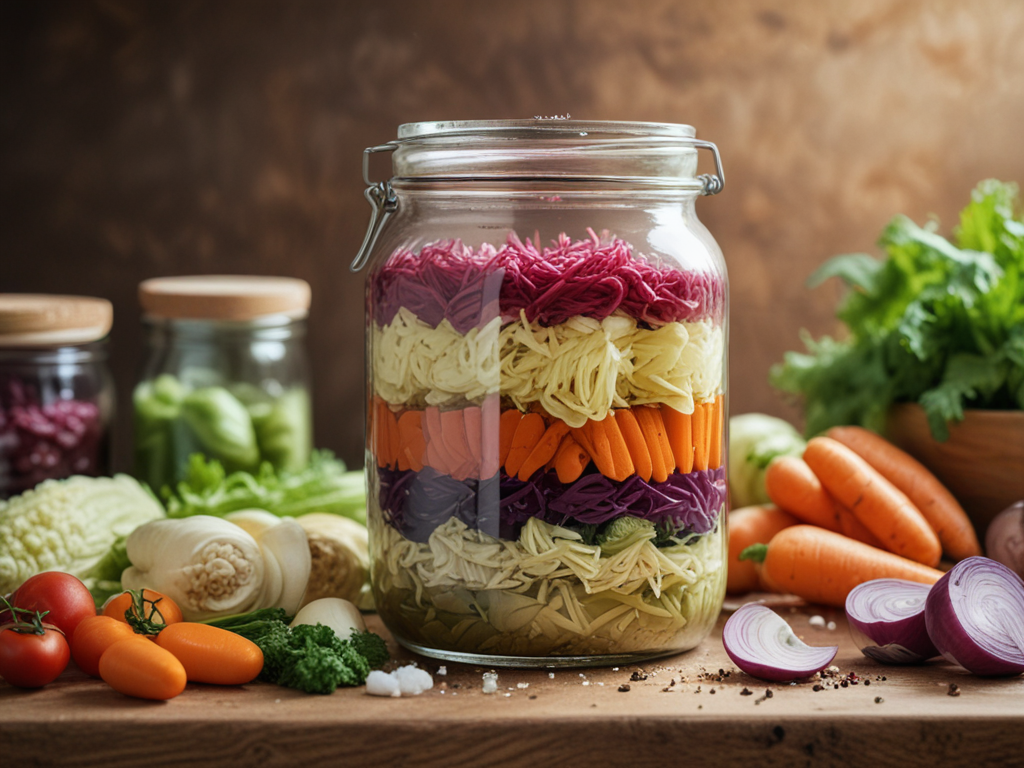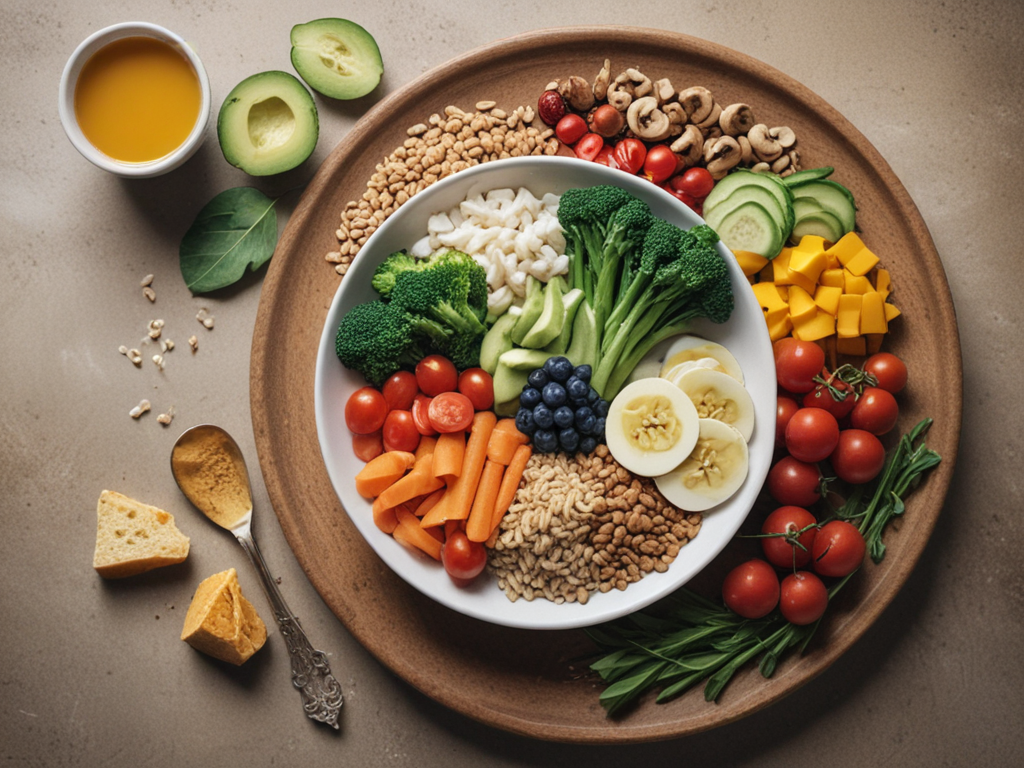
Have you ever wondered about the magic behind the tangy taste of sauerkraut and other fermented foods? The process of fermentation goes beyond just pickling vegetables; it involves a fascinating transformation that reveals a world of flavors and health benefits. As we explore the basics of home fermentation, we will uncover the secrets to creating probiotic-rich delicacies right in your kitchen. Stay tuned to unravel the mysteries of fermentation and discover how simple ingredients can turn into complex, delicious treats through the power of beneficial bacteria.
Benefits of Home Fermentation
When fermenting foods at home, the benefits go beyond just creating delicious and unique flavors. The process of fermentation not only enhances the taste of food but also offers numerous health benefits. Fermented foods are rich in probiotics, which are beneficial bacteria that support gut health and digestion. Consuming these probiotics can help improve overall gut flora balance, boost the immune system, and even aid in nutrient absorption. Additionally, fermented foods are known to be easier to digest, making them a great option for individuals with sensitive stomachs.
Moreover, the fermentation process enhances the nutritional value of foods by increasing the bioavailability of certain nutrients. For example, fermentation can increase the levels of vitamins like B vitamins and vitamin C in the final product. This means that not only are fermented foods flavorful, but they also pack a powerful nutritional punch. Overall, incorporating fermented foods into your diet can lead to a wide array of health benefits while tantalizing your taste buds with diverse flavor profiles.
Essential Equipment for Fermentation
One essential piece of equipment for fermentation is a fermentation vessel, such as a glass jar or a ceramic crock. These vessels provide a controlled environment for the fermentation process to take place. Here are three important items to take into account when setting up your fermentation station:
- Fermentation Vessels: Glass jars, ceramic crocks, or even specially designed fermentation pots are ideal vessels for fermenting foods. These containers are non-reactive and large enough to hold your ingredients while allowing room for the fermentation process to occur.
- Airlock Systems: Airlock systems are essential for maintaining an anaerobic environment within the fermentation vessel. These systems allow gases produced during fermentation to escape without letting oxygen back in, preventing the growth of harmful bacteria.
- Weights and Presses: To keep your ingredients submerged in the brine and prevent mold growth, weights or fermentation presses are necessary. These tools make sure that your fermenting ingredients stay below the liquid level, promoting a successful fermentation process.
Selecting the Right Ingredients
Moving on from the discussion of essential equipment for fermentation, the foundation of successful home fermentation lies in carefully selecting high-quality ingredients. Ingredient sourcing is vital; opt for organic produce when possible to avoid unwanted chemicals that can hinder the fermentation process. When selecting vegetables for your ferment, consider flavor experimentation. Mix different vegetables, like cabbage, carrots, or bell peppers, to create unique taste profiles.
Texture preferences also play a role in ingredient selection. Some enjoy a crunchier texture, which can be achieved by fermenting vegetables for a shorter period, while others prefer a softer texture, obtained through longer fermentation. Additionally, don’t overlook color variations. Combining different colored vegetables not only enhances the visual appeal of your ferment but also provides a wider array of nutrients.
Understanding the Fermentation Process
To explore into the intricacies of fermentation, one must understand the transformative power of beneficial bacteria on raw ingredients.
- Fermentation Science: Fermentation is a natural process where beneficial bacteria, yeast, or fungi break down sugars in food to create compounds like lactic acid, alcohol, or acetic acid. This process not only preserves food but also enhances its flavor and boosts its nutritional value.
- Flavor Profiles: The fermentation process introduces complex flavors and textures to ingredients. For example, cabbage transforms into tangy sauerkraut, and cucumbers become crunchy pickles. Understanding how different fermentation techniques impact flavor profiles can help you create unique and delicious fermented foods at home.
- Probiotic Benefits: Fermented foods are rich in probiotics, which are beneficial microorganisms that support gut health and boost the immune system. Contrary to some myths, proper fermentation creates a safe environment for these probiotics to thrive, making fermented foods a nutritious addition to your diet.
Troubleshooting Common Fermentation Issues
When fermenting vegetables at home, encountering issues like mold growth, a foul smell emanating from the jar, or veggies turning soft or mushy can be quite common. These problems can arise due to improper sterilization of equipment, using contaminated vegetables, or not providing the right environmental conditions for fermentation. Understanding how to troubleshoot these common fermentation issues is important to guarantee the success of your fermenting endeavors.
Mold on Fermenting Veggies
Frequently, mold on fermenting vegetables can be a common issue that arises during the fermentation process. When dealing with mold on fermenting veggies, here are some key points to take into account:
- Preventing mold growth: Maintaining cleanliness in your fermentation environment and using proper salt concentrations can help prevent mold from developing on your veggies.
- Mold removal: If you spot mold on your ferment, do not panic. Remove the affected layer and a bit more to make certain no spores remain. The rest of the ferment is likely salvageable.
- Handling moldy ferments: Pay attention to the type of mold you encounter. White yeast-like molds are generally harmless, while green or black molds should be discarded entirely.
Foul Smell in Jar
Experiencing a foul smell emanating from your fermentation jar can indicate an underlying issue that needs attention. To prevent spoilage and maintain proper fermentation, ensuring jar cleanliness is vital. Here are some tips to tackle odor-related problems:
| Issue | Possible Cause | Solution |
|---|---|---|
| Foul Smell | Harmful bacteria | Check jar hygiene, make sure vegetables are fully submerged in brine |
| Strong Sulfuric Odor | Excessive fermentation time | Open jar briefly to release gases, then reseal |
| Rotten Egg Smell | Yeast imbalance | Adjust salt levels, stir the contents well |
Maintaining a clean fermentation environment and promptly addressing any unusual odors can help control fermentation outcomes and enhance the quality of your homemade ferments.
Soft or Mushy Texture
To troubleshoot the common issue of a soft or mushy texture in fermented foods, it is important to understand the factors that may contribute to this undesirable outcome. Here are three key points to take into account:
- Texture Control: Properly controlling the texture of your fermented foods is vital for achieving the desired consistency.
- Fermentation Duration: Monitoring the fermentation duration is essential to prevent the food from becoming overly soft or mushy.
- Crunchy vs. Soft Fermentation: Understanding the differences between crunchy and soft fermentation can help you adjust your fermentation process to achieve the texture you desire.
Creative Fermentation Recipe Ideas
Let’s explore exciting ways to elevate your fermenting experience with creative recipe ideas that combine unique flavors and inventive techniques. From tangy kimchi variations to spicy jalapeño-infused pickles, the possibilities are endless for experimenting with different fermentation combinations. Discover how to infuse your ferments with herbs, fruits, and spices to create one-of-a-kind fermented dishes that will impress your taste buds and wow your friends and family.
Flavorful Fermentation Combos
In the domain of home fermentation, exploring creative fermentation recipe ideas opens up a world of flavorful possibilities beyond the traditional sauerkraut. When it comes to flavor pairing in fermentation experiments, the following combinations can elevate your culinary creations:
- Tangy Jalapeno Pineapple Kimchi: The heat of jalapenos combined with the sweetness of pineapple creates a unique twist on traditional kimchi.
- Zesty Ginger Carrot Curtido: The zing of ginger paired with the earthy sweetness of carrots adds a rejuvenating kick to this Latin American condiment.
- Savory Beet and Cumin Kvass: The earthiness of beets with the warm spice of cumin results in a rich, flavorful fermented beverage.
These flavorful fermentation combos are just the beginning of a journey into the diverse world of home fermentation.
Unique Fermentation Techniques
Exploring innovative fermentation techniques allows for the creation of unique and exciting culinary delights that push the boundaries of traditional home fermentation practices. Wild fermentation techniques, such as using foraged yeast or allowing vegetables to ferment naturally with the microbes present on their surfaces, can result in truly exceptional flavors. These methods embrace the unpredictability of fermentation, leading to experimental flavor profiles that tantalize the taste buds. For those seeking to enhance their fermentation game, incorporating unusual ingredients like edible flowers, exotic spices, or uncommon vegetables can yield remarkable and unexpected results. By embracing creativity and a spirit of adventure, home fermenters can open up a world of possibilities, expanding their culinary horizons with each new batch.
Storing and Enjoying Fermented Foods
To properly store and enjoy fermented foods, it is essential to understand the key factors that contribute to their longevity and flavor preservation. Here are three important tips to help you make the most of your fermented goodies:
- Long Term Storage: For extended storage, consider transferring your fermented foods to the refrigerator. This slows down the fermentation process, keeping the flavors intact for a more extended period.
- Flavor Preservation: To maintain the vibrant flavors of your fermented foods, make sure they are stored in airtight containers. This helps prevent exposure to oxygen, which can alter the taste over time.
- Fermentation Taste Tests and Serving Suggestions: Regularly taste your fermented creations to gauge their flavor development. Experiment with serving them in various dishes like salads, sandwiches, or as a flavorful side to enhance your meals.





